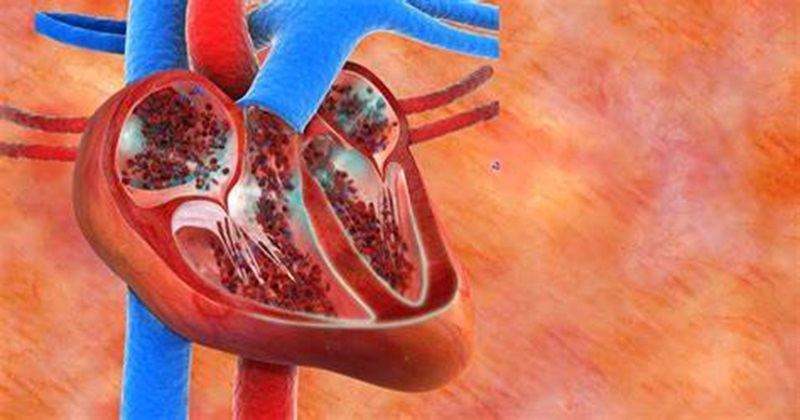Left ventricular (LV) dysfunction is a condition characterized by the impaired functioning of the left ventricle, the heart’s primary pumping chamber. This condition can result from various factors, including coronary artery disease, high blood pressure, heart attacks, and cardiomyopathy. LV dysfunction often progresses to heart failure if left untreated. This article explores the prognosis, management, and quality of life for individuals diagnosed with LV dysfunction.
Understanding Left Ventricular Dysfunction
The left ventricle is responsible for pumping oxygenated blood throughout the body. When the left ventricle is weakened or damaged, it can no longer pump blood efficiently, leading to a buildup of pressure in the heart and lungs. This condition can be categorized into two types:
Systolic Dysfunction: The left ventricle loses its ability to contract normally, leading to a reduced ejection fraction (the percentage of blood pumped out of the ventricle with each heartbeat).
Diastolic Dysfunction: The left ventricle becomes stiff and unable to relax properly, causing inadequate filling with blood.
SEE ALSO: Which Fruit Is Good After Angioplasty
Factors Influencing Prognosis
The prognosis for individuals with LV dysfunction varies widely and depends on several factors:
Severity of Dysfunction: the extent of LV dysfunction, often measured by ejection fraction, significantly impacts prognosis. A lower ejection fraction indicates more severe dysfunction and a higher risk of adverse outcomes.
Underlying Cause: The cause of LV dysfunction plays a crucial role. For example, LV dysfunction resulting from a heart attack may have a different prognosis than that caused by hypertension or cardiomyopathy.
Comorbidities: The presence of other medical conditions, such as diabetes, kidney disease, or chronic obstructive pulmonary disease (COPD), can worsen the prognosis.
Age and Gender: Older age and male gender are generally associated with a poorer prognosis in LV dysfunction.
Treatment Adherence: Adherence to medical treatments and lifestyle modifications can significantly improve outcomes.
Patients who follow their prescribed treatment plans tend to have better survival rates.
Treatment And Management
Managing LV dysfunction involves a combination of lifestyle changes, medications, and sometimes surgical interventions.
The goals are to relieve symptoms, improve quality of life, and prevent the progression of the disease.
Lifestyle Modifications:
Diet: A heart-healthy diet low in sodium, saturated fats, and cholesterol is essential. The DASH (Dietary Approaches to Stop Hypertension) diet is often recommended.
Exercise: Regular physical activity, tailored to the individual’s capabilities, helps improve cardiovascular health and overall well-being.
Smoking Cessation: Quitting smoking is critical as it reduces the risk of further cardiovascular damage.
Alcohol Consumption: Limiting alcohol intake can prevent additional strain on the heart.
Medications:
ACE Inhibitors and ARBs: These medications help relax blood vessels, reduce blood pressure, and decrease the heart’s workload.
Beta-Blockers: These drugs reduce heart rate and blood pressure, improving heart function and reducing symptoms.
Diuretics: These help remove excess fluid from the body, relieving symptoms such as swelling and shortness of breath.
Aldosterone Antagonists: These medications help reduce fluid retention and improve heart function.
Device Therapy:
Implantable Cardioverter-Defibrillators (ICDs): These devices monitor heart rhythms and deliver shocks if life-threatening arrhythmias are detected.
Cardiac Resynchronization Therapy (CRT): This therapy helps coordinate the contractions of the heart’s chambers, improving its efficiency.
Surgical Interventions:
Coronary Artery Bypass Grafting (CABG): This surgery improves blood flow to the heart by bypassing blocked arteries.
Heart Valve Surgery: Repairing or replacing faulty heart valves can improve LV function.
Left Ventricular Assist Device (LVAD): This mechanical pump supports the heart in severe cases of LV dysfunction.
Heart Transplant: In end-stage heart failure, a heart transplant may be the only viable option.
Prognosis And Survival Rates
The survival rate for individuals with LV dysfunction varies widely based on the factors mentioned earlier. Studies have shown that with appropriate management, many individuals can live for several years with LV dysfunction.
Mild to Moderate Dysfunction: Individuals with mild to moderate LV dysfunction, who adhere to their treatment plans and make necessary lifestyle changes, can often live for many years with a good quality of life.
Severe Dysfunction: Those with severe LV dysfunction have a higher risk of complications and a lower survival rate.
However, advancements in medical therapy and surgical interventions have improved outcomes even in severe cases.
Heart Failure: LV dysfunction often leads to heart failure, categorized into different stages (A, B, C, and D). Survival rates decrease as the condition progresses from Stage A (at risk of heart failure) to Stage D (advanced heart failure).
Comorbid Conditions: The presence of comorbid conditions can significantly impact survival. For example, individuals with LV dysfunction and diabetes have a higher risk of mortality compared to those without diabetes.
Quality of Life
Living with LV dysfunction requires ongoing management and lifestyle adjustments. However, many individuals can maintain a good quality of life with the right support and treatment. Regular follow-up with healthcare providers, adherence to prescribed treatments, and engaging in heart-healthy activities are crucial for managing the condition.
Conclusion
How Long Can You Live with LV Dysfunction
The prognosis for individuals with LV dysfunction varies based on the severity of the condition, underlying causes, comorbidities, and adherence to treatment. With advancements in medical therapies and surgical interventions, many individuals with LV dysfunction can live for several years with an improved quality of life. Early diagnosis, appropriate management, and lifestyle modifications play a vital role in improving outcomes and extending survival.


